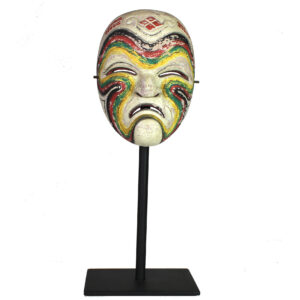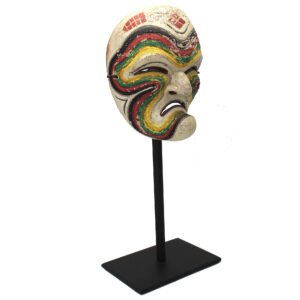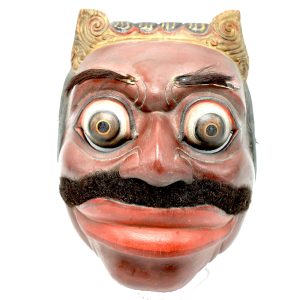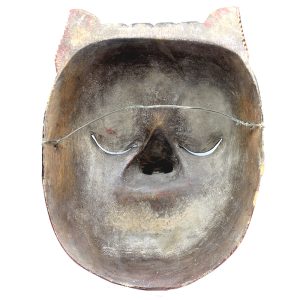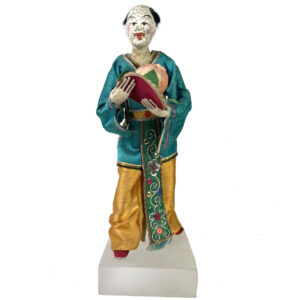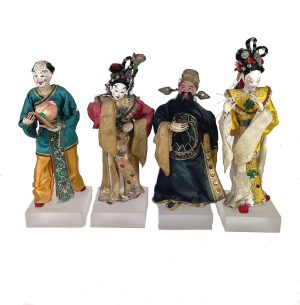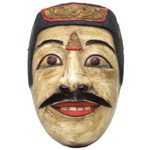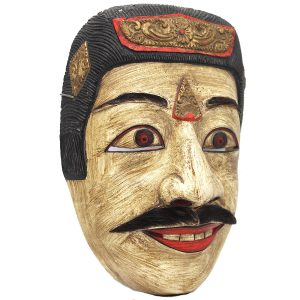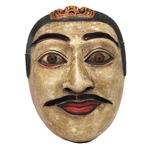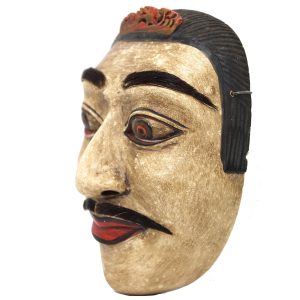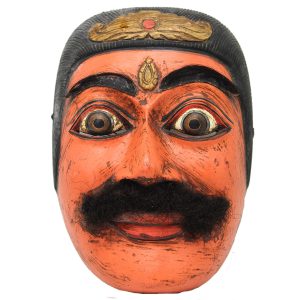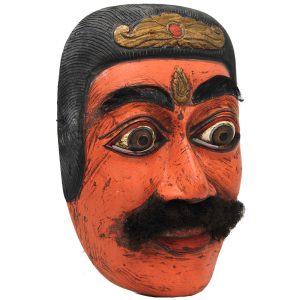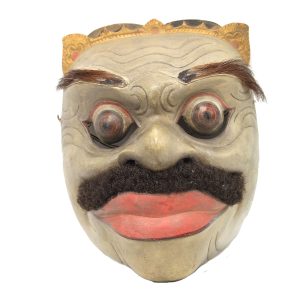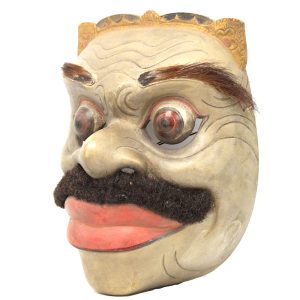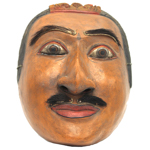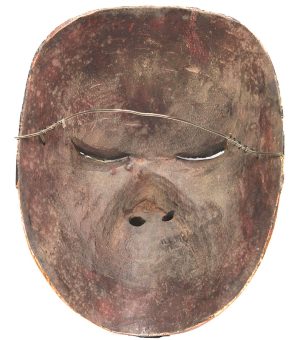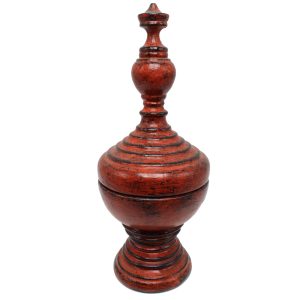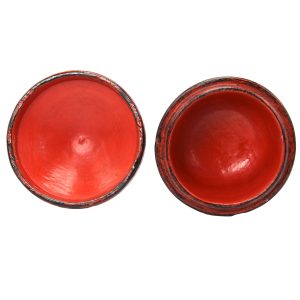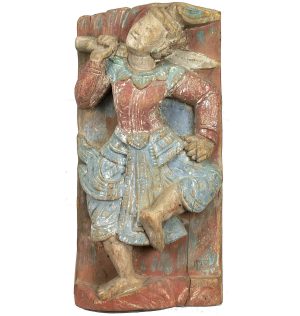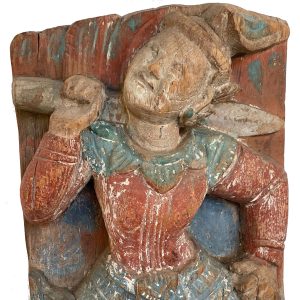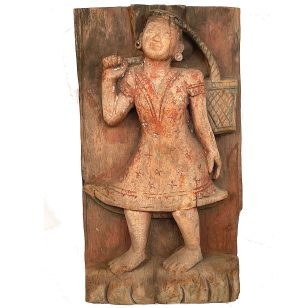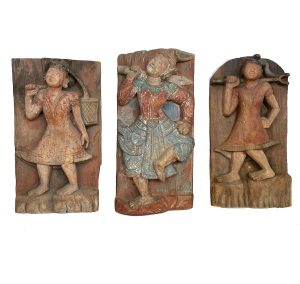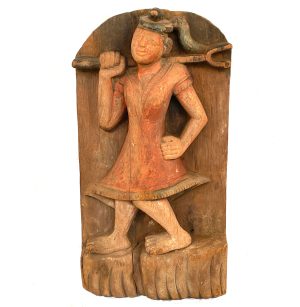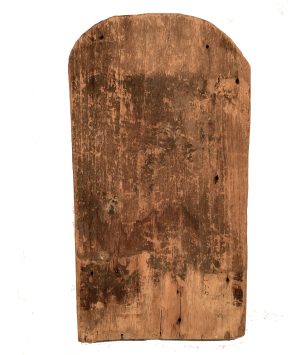Showing 289–300 of 313 results
-


$1,050.00
Javanese Wayang (puppet theater) Topeng (literally “pressed against the face” or mask) is a very refined dance form accompanied by gamelan music. In Bali Topeng tua is the charming dance of an old courtier’s fragile movements, his lack of control and his gathering energy for a short lively dance. He sits behind a cloth curtain,…
-


$125.00
This ethnic and folk-art Bali legendary court minister (topeng patih) is performed in a special mask dance named Topeng Panjegan, as only one dancer interprets five different characters wearing full face masks preventing speech. Patih manis (Sweet Minister) is often the first solo dance after a gamelan orchestra introduction, and this patih keras (strong minister)…
-
Sale!


$195.00 Original price was: $195.00.$135.00Current price is: $135.00.
H: 9.25″ W: 3.125″ D: 3″ | Free SHipping within continental u.s.!
Originally mounted on the wood stick between his legs and now inserted to its acrylic stand, this vintage male doll is an attendant offering a huge peach. His large oval head is almost bald and his black hair remains only in a small patches on the sides of his head. He wears a typical colorful folk-art Chinese dance costume: bright red shoes, yellow pants, a greenish-blue coat with florals, a high sequined yellow belt, and a wide blue sash outlined with silver and gold thread and colored 5-petal silver sequin plum blossoms hanging down to the base evoking a wish for the Five Blessings or Happinesses. It is in very good condition with expected wear and minor paint losses and charming spotting on the face.
-


$105.00
All ethnic mask (topeng) dances in Bali are accompanied with music from a gamelan percussion orchestra as are dramas and other entertainments considered as offerings to honor, please and attract the favor of the gods and ancestral spirits. In the west dancers put on masks to pretend they are someone else. Balinese dancers become the…
-


$110.00
Wearing a full mask of an ideal high-born Hindu king (dalem), dancers from Bali perform folk-art and ethnic-art dances without speech using only body language, gestures and movements to depict the mask’s character. Made from light and color-enhancing, easy to carve and durable pulai wood, Balinese-masks (topeng) honor and attract the favor of gods and…
-


$125.00
There are two traditional Balinese masks of the king’s prime minister (topeng patih). Both are refined, well-bred warriors from the second caste holding a prestigious position, and, like all dance masks, they are accompanied by a gamelan. This mask is a patih keras (strong minister) which is usually red or orange symbolizing a tough, intense…
-


$125.00
Court ministers (patih) in Bali, Indonesia are danced in mask (topeng) performances named Topeng Panjegan where a single dancer interprets 5 legendary characters wearing full face masks, cannot speak and much portray them only through gestures and body language and positions. Patih manis (literally sweet, a good natured, diplomatic minister) is often the first solo…
-


$125.00
This is Kebo Taruna mask a powerful historical Balinese minister (patih) from the 14th century. Considered a folk-art, Hindu-cultural-and-ritual-art, ethnic art and offerings to the gods, masks are danced in a historical drama with the music of a percussion orchestra (gamelan). Balinese-masks are carved using a light durable wood called pulai that enhances pigments and…
-


$185.00
H: 10.5” Dia: 4.25″ | FREE SHIPPING WITHIN CONTINENTAL U.S.!
Made in Pagan this miniature hsun ok demonstrates the remarkable sense of design of Burmese wood carvers. It is crafted in two separate parts and replicates the shape of larger hsun-Ok, which traditionally have covers with spired lids topped by elegant finials that imitate the soaring outline of Burmese stupa finials. This modest piece has circular tiers repeated on the foot and the stupa finial top.
-


$335.00
Traditional Burmese dance has its roots in folk religion and is a combination of ancient animism, nat worship and a later syncretic blend with Buddhism. Ethnic minorities often perform dances that include warriors , Zawgyi (shaman) and nats wielding swords or holding drums while dressed in full-body costumes. Burmese performances were regulated with limitations on…
-


$335.00
Burmese women always have taken part in demanding strenuous work, but they rarely see themselves as farmers. This is because of Burma’s old patriarchal culture, narrow Burmese laws and social limitations of rural beliefs that define them as workers who labor for men: their father, brother or husband. This wonderful painted folk-art wood panel of…
-


$335.00
Burmese women always did strenuous work, yet they rarely see themselves as farmers. This is due to Burma’s old patriarchal culture, Burmese laws and narrow rural beliefs defining them as workers laboring for men only: their father, brother or husband. This wonderful painted wood panel of a barefoot female farmer depicts her with the long…
End of content
End of content

